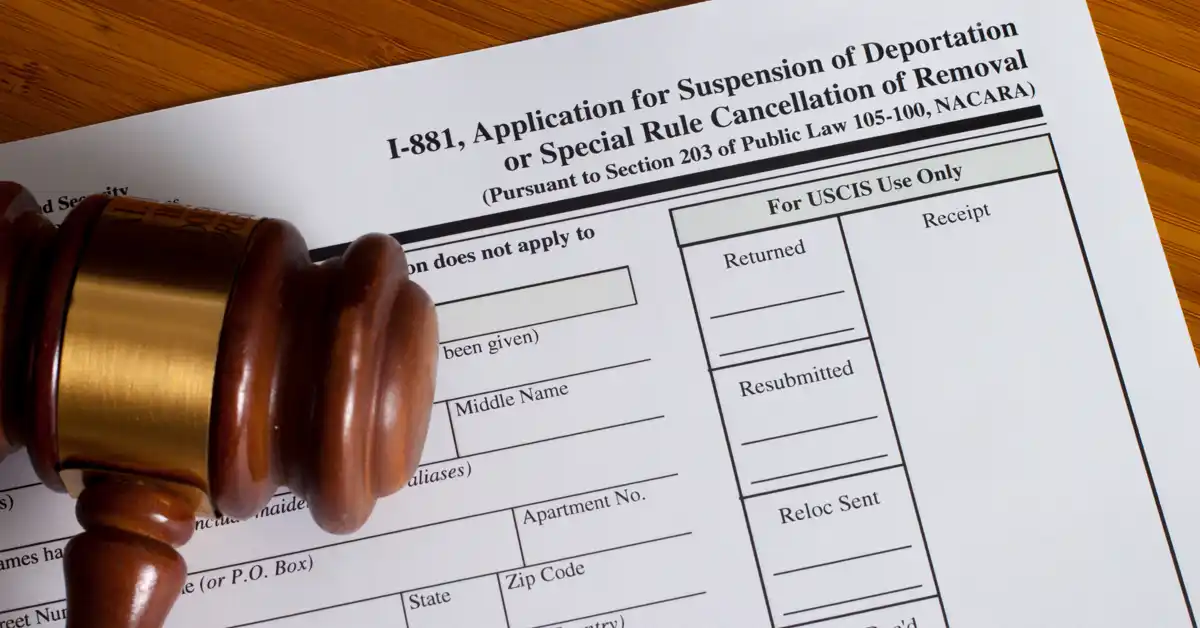Immigration removal proceedings is the term used by the U.S. government for the legal process that leads to removal from the United States for a non-citizen. It is more commonly called deportation, but the formal proceedings are triggered if a non-citizen is deemed legally ineligible to remain in the U.S. Below is an explanation of the process, as well as advice for what to do if you find yourself in immigration removal proceedings.
Background of Immigration Removal Proceedings
The Illegal Immigration Reform and Immigrant Responsibility Act of 1996 (IIRIRA) was a law enacted by the Clinton administration to crack down on illegal immigration. It tightened the laws surrounding the types of things that could trigger removal proceedings. IIRIRA also implemented, among other things:
- Expedited removal, which is fast-tracked deportation without a hearing before a judge. Non-citizens placed into expedited removal do have rights to have an attorney present during their interviews or to an appeal.
- Stipulated removal, or removal required as part of a plea agreement in a criminal trial of a non-citizen
- Reinstatement of removal, which means reactivating removal orders for non-citizens who were previously removed and re-enter the U.S. This reinstates the original order with no option for review.
- Established 3-year, 5-year, 10-year, and lifetime bars to re-entry depending on the reason the non-citizen was removed
- Allows state and local law enforcement agencies to partner with Immigration and Customs Enforcement (ICE) to deputize their officers to aid in the detention of non-citizens (287(g) Program).
- Gave the U.S. Attorney General authority to construct a barrier at the U.S. border with Mexico
Immigration Removal Proceedings (Deportation) Process
The removal proceedings process follows certain steps, beginning with the non-citizen receiving a Notice to Appear from the U.S. Government.
- The Notice to Appear is a document addressed to the non-citizen as the “respondent.” It is a legal document served by an immigration official. The Notice will list the reasons the individual has been placed in removal proceedings and possibly the date they should appear in front of an immigration judge for their initial hearing.
- At the Initial Hearing, the respondent is allowed to have an attorney present, but if they do not hire their own, the court will not provide one for them.
- At the Removal Hearing, the respondent or their attorney states their case against removal. Some respondents can also request relief from removal through different avenues such as adjustment of status, waivers, protections from removal or waivers of inadmissibility. An attorney can help you determine the best course of action given your unique circumstances.
- If the judge denies your case and issues an Order of Removal, the respondent may appeal the decision to the Board of Immigration Appeals. If the Immigration Judge grants the respondent’s application to remain in the U.S., the government may also appeal the decision the same Board.
This lists the typical removal procedure, but in certain circumstances an expedited removal process is employed.
Reasons for Removal
Some of the reasons a non-citizen may be placed in removal proceedings include:
- Being in the U.S. unlawfully
- Being convicted of a serious crime
- Being referred from the asylum office after an asylum interview
- An expired visa
- Committing fraud to obtain a visa
- Violations of Permanent Residency
If you hold a green card but you are found guilty of fraud in obtaining the card, are convicted of a crime, or fail to file tax returns / spend too much time out of the country, you may become a target for removal.
If you or a loved one receive a Notice to Appear, you should take it very seriously and your first call should be to an attorney.
Expedited Removal Expansion for 2025
Expedited removal is a fast-tracked deportation process, in which there is no hearing before a judge. Previously, this was used to remove people who either already had removal orders in place by a judge or had recently entered the U.S. unlawfully and were at or near the border. Effective January 21, 2025, however, the Department of Homeland Security (DHS) issued a notice that they were expanding ICE ’s expedited removal powers to include anyone who has been in the U.S. unlawfully for less than two years. If an undocumented person cannot prove they have lived in the U.S. for more than two years, they may face expedited removal.
A lawsuit has been filed challenging this new regulation by the American Civil Liberties Union, citing the Fifth Amendment’s Due Process Clause. However, the government’s attorneys may argue that the protections of the U.S. Constitution exist for U.S. citizens. The outcome of this case remains to be seen, and for the moment expedited removals continue.
It is advised that if you are an undocumented person, you carry evidence with you of having lived in the United States for more than two years. Some examples of this include mail, signed leases, school records with your name and address, etc.
What to Do if You Have More Questions
If you find yourself the recipient of a Notice to Appear from the Department of Homeland Security and have been placed in immigration removal proceedings, do not delay in seeking the counsel of an immigration attorney! If you do not hire someone to represent you at the hearing, the immigration court will not provide one for you. For help with this or any immigration questions you may have, contact us to schedule a time to speak with a qualified immigration attorney. It has never been more important to have a knowledgeable and compassionate advocate on your side.





